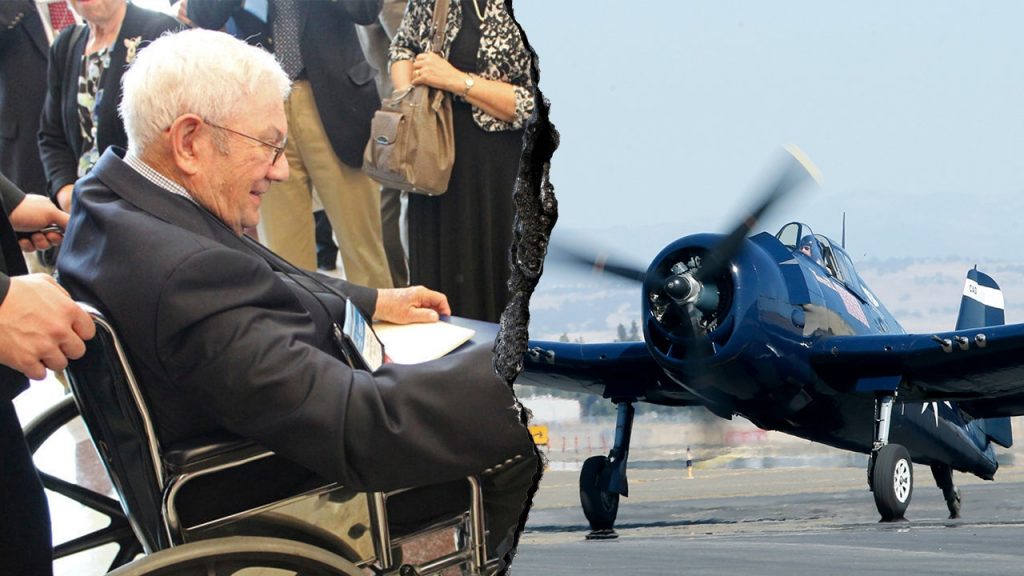The Last Ace: Remembering Donald McPherson, WWII Hero (1920-2023)
Donald McPherson, widely recognized as America’s last surviving “ace” pilot from World War II, passed away on August 14, 2023, at the remarkable age of 103 in Nebraska. His story represents not just an individual life well-lived, but also the closing of a significant chapter in American military history. As a Navy fighter pilot flying F6F Hellcat fighters from the USS Essex in the Pacific theater, McPherson earned his “ace” status by shooting down five Japanese aircraft—the minimum threshold for this prestigious designation. This achievement placed him among an elite group of pilots whose courage and skill shaped the outcome of aerial combat during history’s most devastating global conflict. Beyond the statistics of aerial victories, McPherson’s service earned him numerous accolades, including three Distinguished Flying Crosses and the Congressional Gold Medal, recognizing his substantial contributions to American history.
McPherson’s journey through World War II began in 1942 when, at just 18 years old, he enlisted in the Navy. After completing flight training two years later, he married his wife Thelma before deploying to the Pacific. Throughout his combat experiences, McPherson maintained a profound sense of divine protection, often reflecting on moments when he felt “Maybe God is not done with me.” This spiritual perspective would become a defining element of his character and legacy. His daughter Beth Delabar emphasized that beyond all other accomplishments, her father would primarily want to be remembered as “a man of faith.” This deep-seated belief system not only carried him through the perils of combat but also guided his approach to civilian life and community service in the decades that followed the war.
The significance of McPherson’s status as the final surviving American ace from World War II cannot be overstated. Both the American Fighter Aces Association and the Fagen Fighters WWII Museum confirmed him as the last living pilot to hold this distinction. His passing marks the end of a living connection to a unique aspect of combat aviation history—a time when individual skill, courage, and split-second decision-making in the cockpit could directly influence the outcome of major military campaigns. The ace pilots of World War II became legends in their time, their exploits celebrated in newspapers, newsreels, and popular culture. They represented a special combination of technical mastery and personal bravery that captured the public imagination and boosted home front morale during the war’s darkest hours.
After returning from war, McPherson demonstrated that heroism takes many forms by dedicating himself to his community of Adams, Nebraska. He settled into work as a letter carrier—a dramatic shift from the high-stakes environment of carrier-based combat operations—but found numerous ways to serve his neighbors and nurture future generations. His commitment to community building manifested in helping establish youth baseball and softball leagues, serving as a Scoutmaster, and taking on various leadership positions within local organizations. These contributions reflected his understanding that citizenship, like military service, requires active participation and personal investment. The community’s decision to name their local ballfield “McPherson Field” in honor of Donald and his wife Thelma stands as testimony to the impact they had on countless young lives and the fabric of their hometown.
McPherson’s century-spanning life witnessed extraordinary technological and social transformations. He belonged to a generation that grew up during the Great Depression, fought in history’s largest conflict, and then lived to see the digital revolution and beyond. The fighter planes he flew in combat were cutting-edge technology in the 1940s, with speeds approaching 400 mph—a far cry from today’s supersonic jets. Yet the fundamental qualities that made McPherson and his fellow aces successful—calm under pressure, tactical intelligence, situational awareness, and precise execution—remain essential characteristics for military aviators today. His longevity allowed him to serve as a living bridge between the aviation pioneers of the early 20th century and the aerospace achievements of the modern era, offering perspective on how rapidly human capabilities can evolve within a single lifetime.
Donald McPherson’s legacy endures through his surviving family, including his daughters Beth and Donna, his son, and numerous grandchildren and great-grandchildren. More broadly, his story represents the contributions of an entire generation who faced global threats with determination and sacrifice, then returned home to build communities and raise families with the same commitment they had shown in wartime. As the nation loses these direct connections to World War II, institutions like the National WWII Museum become increasingly vital in preserving their experiences for future generations. McPherson’s passing reminds us that even as we lose the physical presence of these veterans, their examples of courage, service, and citizenship remain as powerful guideposts. In a world facing new and complex challenges, the values demonstrated by McPherson and his contemporaries—faith, duty, community engagement, and unwavering commitment to principles larger than oneself—continue to offer relevant wisdom for navigating uncertain times.


